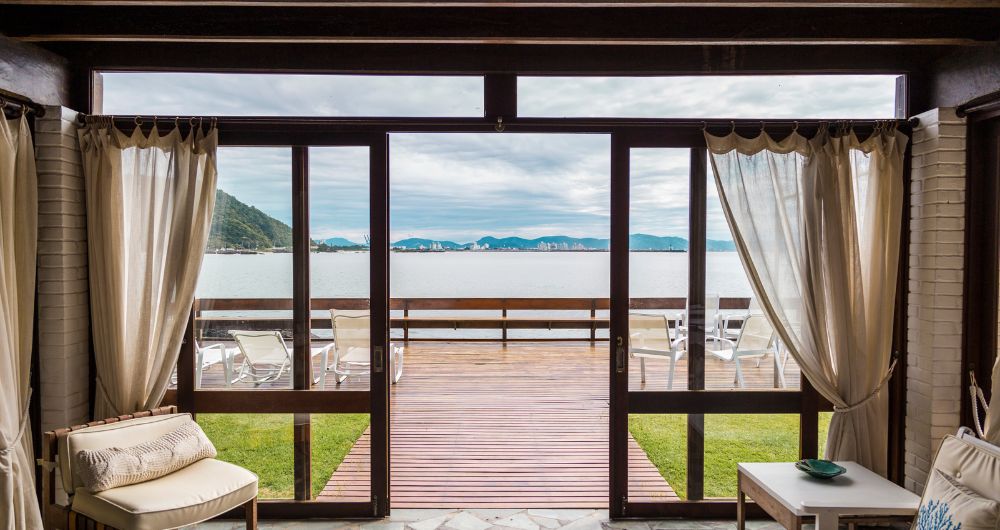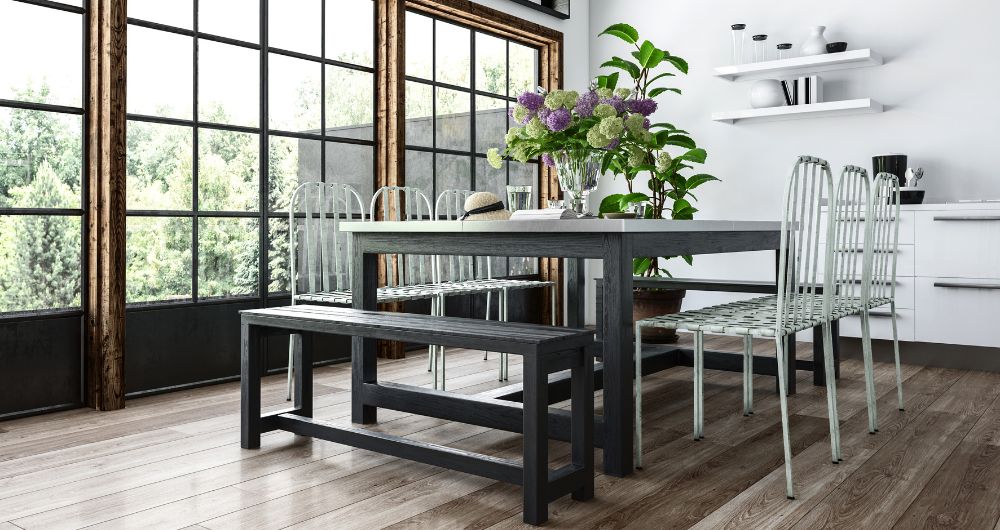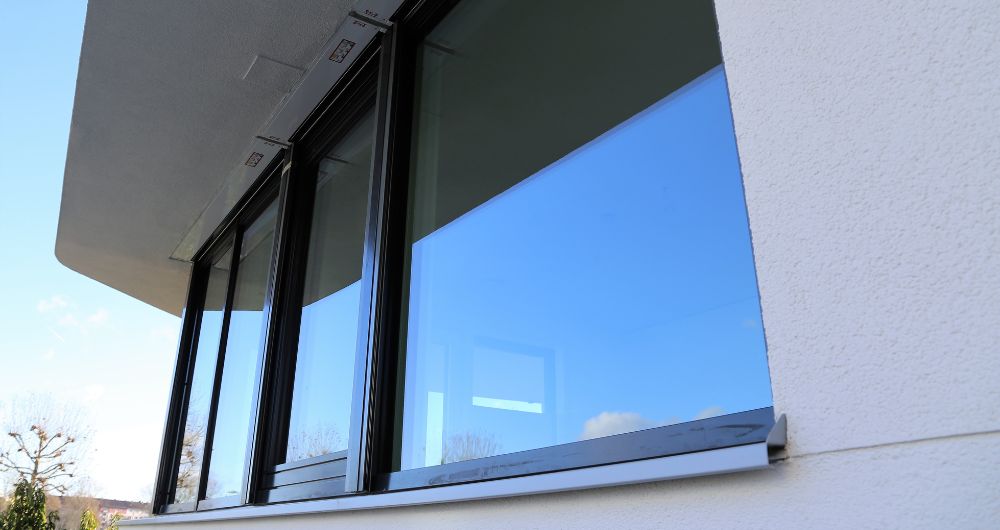Impact windows protect homes and buildings from severe weather conditions like hurricanes and strong winds. However, choosing the right impact windows involves understanding various certifications and standards to ensure they meet safety and quality requirements. Here are answers to seven frequently asked questions about impact window certifications and standards:

Table Of Contents
- What are Impact Windows?
- How are Impact Windows Tested for Certification?
- What Certifications Should Impact Windows Have?
- Are There Different Grades of Impact Windows?
- Do Impact Windows Need to Meet Specific Building Codes?
- What Materials Are Used in Certified Impact Windows?
- How Often Should Impact Windows Be Replaced or Re-certified?
Key Takeaways
|
1. What are Impact Windows?
Impact windows are specialized windows designed to withstand severe weather forces, such as hurricanes and high winds. These windows are constructed using reinforced glass and frames, offering enhanced protection against impacts from debris. The robust design of impact windows safeguards your home from damage and provides additional benefits, including improved energy efficiency and noise reduction.
When exploring FAQs about impact window certifications and standards, it’s crucial to understand that certified impact windows have undergone rigorous testing to meet specific safety and performance criteria. This ensures they offer the highest level of protection, making them an essential investment for homes in storm-prone areas.
2. How are Impact Windows Tested for Certification?
Understanding the process behind the testing and certification of impact windows is essential for anyone looking into FAQs about impact window certifications and standards. The rigorous testing procedures ensure these windows can withstand the harsh conditions they’re designed to protect against.
Large Missile Test
The first step in certifying an impact window involves what’s known as the Large Missile Test. This test simulates hurricane conditions where wind-borne debris like tree branches could forcefully strike a window. A wooden 2×4, weighing approximately 9 pounds, is fired from a cannon at the window at a speed of 50 feet per second. The goal is to see if the window can withstand the impact without any penetration. This test is specifically required for windows being installed in buildings less than 30 feet in height, where the risk of impact from larger debris is more significant.
Small Missile Test
For buildings positioned higher than 30 feet, the Small Missile Test is applicable. This involves firing small steel balls at the window at speeds around 90 miles per hour (or 130 feet per second). The intent here is similar: to determine if these smaller, but faster, projectiles can penetrate the window. This test acknowledges the different types of debris that might impact windows at higher elevations during a storm.
Water Test
Following the impact and pressure tests, the Water Test is crucial in certifying impact windows’ resilience against another common hazard of severe weather: wind-driven rain.
To simulate these extreme conditions, the Water Test involves pouring many gallons of water onto the exterior of the window or door at a rapid pace, far exceeding the volume of water typically delivered by even the heaviest natural rainstorms. To mimic the effect of wind-driven rain, a system then pumps air behind the cascading water toward the window or door. This test ensures that the impact window or door can effectively resist water infiltration, a critical factor in protecting the interior of buildings from water damage during a storm.
Pressure Test
Following the impact tests, the Pressure Test is conducted to simulate the rapid pressure changes a window would face during a hurricane. This involves subjecting the window to 9,000 cycles of pressure changes — 4,500 positive and 4,500 negative — to assess its endurance against the kind of pressure dynamics present in a hurricane. The performance in this test determines the window’s Design Pressure (DP) rating, indicating its strength and resilience. The higher the DP number, the stronger the window.
Organizations such as the American Society for Testing and Materials (ASTM) and the Miami-Dade Notice of Acceptance (NOA) oversee these tests, ensuring impact windows can protect properties.

3. What Certifications Should Impact Windows Have?
Knowing which certifications are essential when delving into FAQs about impact window certifications and standards. These certifications indicate that the windows have undergone rigorous testing and meet specific safety and performance criteria.
ASTM Certifications
The American Society for Testing and Materials (ASTM) provides several important certifications for impact windows. Two of the most critical ASTM standards are:
- ASTM E1886: This standard covers the performance of windows subjected to wind loading and impact from wind-borne debris. It ensures that the window can withstand specific impact energies without failing.
- ASTM E1996: This standard is closely related to ASTM E1886 and specifies the test methods for determining windows’ wind and debris resistance. Together, these standards form the basis for evaluating the durability and resilience of impact windows under hurricane conditions.
- AAMA 506: The American Architectural Manufacturers Association (AAMA) 506 certification – Voluntary Specifications for Impact and Cycle Testing of Fenestration Products. This certification further defines the procedures for impact and cycle testing, ensuring that windows not only withstand initial impacts but also endure the repeated stress of cyclical pressure changes typical of hurricane conditions.
Miami-Dade County Product Control Approval
Considered one of the most stringent certifications, the Miami-Dade County Product Control Approval is sought after for windows installed in some hurricane-prone areas. This certification entails:
- Comprehensive Testing: Windows must pass the Large and Small Missile Tests and the rigorous Pressure Test to ensure they can withstand the extreme conditions often experienced in Miami-Dade County and other hurricane-belt regions.
- Quality Assurance: This approval process goes beyond testing for impact resistance and examines the manufacturing quality control procedures, ensuring that every window produced meets the high standards required for certification.
Additional Considerations
- Design Pressure (DP) Ratings: A key figure that emerges from testing, indicating the level of wind pressure a window can withstand. Higher DP ratings signify stronger, more resilient windows.
- Energy Performance: Look for certifications related to energy efficiency, such as those from the National Fenestration Rating Council (NFRC). These certifications indicate that the window protects against impacts and contributes to the home’s energy efficiency.
4. Are There Different Grades of Impact Windows?
In exploring FAQs about impact window certifications and standards, a common question arises: Are there different grades of impact windows? Indeed, impact windows come in various grades, reflecting their ability to withstand different levels of impact and environmental conditions.
The Performance Grade (PG) Grading system assesses windows based on their resilience against water resistance, air infiltration resistance, and structural load—factors crucial for withstanding severe weather conditions.
It calculates the grade based on the collective results of all three tests. Consequently, if a window performs poorly in any test, its overall PG rating reflects this lower score. This approach ensures that a window’s PG rating accurately represents its all-around performance, emphasizing its weakest area.
How PG Grades Correspond to Hurricane Categories
The PG grading system provides an intuitive way to understand the level of protection offered by an impact window. Here’s a simple breakdown:
- PG 10 – Suitable for Category 1 hurricanes (74-95 mph winds).
- PG 20 – Designed to withstand Category 2 hurricanes (96-110 mph winds).
- PG 30 – Can resist Category 3 hurricanes (111-129 mph winds).
- PG 40 – Built for Category 4 hurricanes (130-156 mph winds).
- PG 50 – Able to endure Category 5 hurricanes (157+ mph winds).
This system makes it easier for individuals to select windows based on their location’s specific hurricane exposure. For instance, a property in an area prone to Category 4 hurricanes would benefit most from windows rated at PG 40, which ensure adequate protection against potential wind speeds and debris impacts associated with such storms.

5. Do Impact Windows Need to Meet Specific Building Codes?
Understanding the building codes related to impact windows is a key aspect of FAQs about impact window certifications and standards.
Building codes for impact windows specify the minimum requirements for wind resistance, impact resistance, and installation procedures. The goal is to ensure that all buildings offer uniform protection against natural disasters like hurricanes and tornadoes.
Regional Variations
Building codes can vary significantly from one region to another, reflecting the local climate and weather patterns. For example, coastal areas prone to hurricanes, such as Florida and the Gulf Coast, have more stringent requirements for impact windows compared to inland areas. These regional codes are designed to address the specific risks buildings face in those areas, making compliance a critical factor in the construction and renovation processes.
Key Codes to Know
- International Building Code (IBC): Provides safety and performance standards for commercial buildings, including requirements for impact windows in hurricane-prone areas.
- International Residential Code (IRC): This code is similar to the IBC but focused on residential buildings. It outlines the standards for window installation in homes that can withstand high winds and debris impacts.
- Florida Building Code (FBC): Known for its stringent requirements, the FBC sets specific standards for impact windows in Florida, a state frequently hit by hurricanes. The FBC details the testing and certification impact windows must undergo before they are deemed compliant.
6. What Materials Are Used in Certified Impact Windows?
The choice of materials significantly affects the performance and certification of impact windows.
This is a common thread in FAQs about impact window certifications and standards, underscoring the significance of material composition.
Glass Options
- Laminated Glass. Predominantly, laminated glass is the go-to choice for impact windows. It comprises two glass layers bonded with a resilient plastic interlayer, usually polyvinyl butyral (PVB) or ethylene-vinyl acetate (EVA). This composition prevents the glass from shattering into dangerous shards upon impact. Besides its protective capacity, laminated glass offers UV protection, safeguarding interior furnishings from sun damage.
- Tempered Glass. Tempered glass, strengthened through thermal or chemical treatments, breaks into small, harmless pieces, minimizing injury risks. Although less impact-resistant than laminated glass, it provides an additional security and durability when used with laminated glass.
- Low-Emissivity (Low-E) Glass. A noteworthy addition to the glass options for impact windows is Low-Emissivity (Low-E) glass. This type of glass has a microscopically thin coating that reflects heat while allowing light to pass through. Low-E glass significantly enhances energy efficiency by reflecting interior temperatures inside the room, reducing the need for heating in winter and cooling in summer. Its inclusion in impact windows adds an extra layer of functionality, combining safety with energy savings.
Frame Materials
- Aluminum. Aluminum frames are favored for their robustness, lightweight, and corrosion resistance. They can withstand high forces, making them suitable for hurricane-prone areas. Despite being more costly, their durability and low maintenance make them popular.
- Vinyl. Vinyl frames excel in insulation, helping to reduce energy bills by minimizing heat transfer. They are moisture, corrosion, and UV-resistant, with potential reinforcement for enhanced strength. This makes them a versatile option for impact windows.
- Wood. Wood frames offer natural beauty for those valuing aesthetics but require more upkeep to prevent damage from elements or pests. Treated wood, combined with laminated or Low-E glass, provides strength and energy efficiency, making it a viable option for impact windows.

7. How Often Should Impact Windows Be Replaced or Re-certified?
Another frequently asked question about impact window certifications and standards is when to replace or re-certify impact windows. Knowing the right time to replace or re-certify your windows ensures they provide optimal protection and performance over the years.
Expected Lifespan
Quality impact windows are designed to last many years. Most have a lifespan ranging from 10 to 40 years, depending on the materials used and the conditions they’re exposed to. This longevity is a testament to the advanced engineering and high-quality materials employed in their construction.
Factors Affecting Durability
Several factors can influence the durability of impact windows, including:
- Exposure to Harsh Weather Conditions: Constant exposure to severe weather can accelerate wear.
- Maintenance Practices: Regular cleaning and maintenance can extend the lifespan of impact windows.
- Material Quality: Higher quality materials generally offer longer-lasting protection and performance.
Signs That Replacement Is Needed
- Visible Damage. Any cracks, chips, or significant scratches in the glass or damage to the frame could compromise the integrity of the window, indicating a need for replacement.
- Performance Issues. If you notice leaks, drafts, or increased noise penetration, it might be time to consider replacing your impact windows. These issues can signify seal failure or structural degradation.
The Re-certification Process
- Importance of Re-certification. Re-certification ensures that impact windows meet current building codes and standards, which may have evolved since the windows were originally installed. This process involves a professional inspection to verify that the windows provide adequate protection.
- When to Re-certify. While there’s no set rule for how often re-certification should occur, it’s advisable to have impact windows inspected every ten years or after any significant storm event that could have affected their integrity. This timeline ensures that potential issues are identified and addressed promptly, maintaining the windows’ protective capabilities.
Ready for Unmatched Protection? Connect with Prestige Windows and Doors Today!
Understanding the FAQs about impact window certifications and standards is crucial for ensuring your property’s safety and compliance. With an array of grades, materials, and testing criteria to consider, having the right information is key. For expert guidance and top-quality solutions in Miami-Dade County, FL, USA, visit Prestige Windows and Doors. Our team is dedicated to providing you with the best impact window options tailored to your needs.
Ready to upgrade your protection with certified impact windows? Contact Prestige Windows and Doors today and secure your property with confidence.
